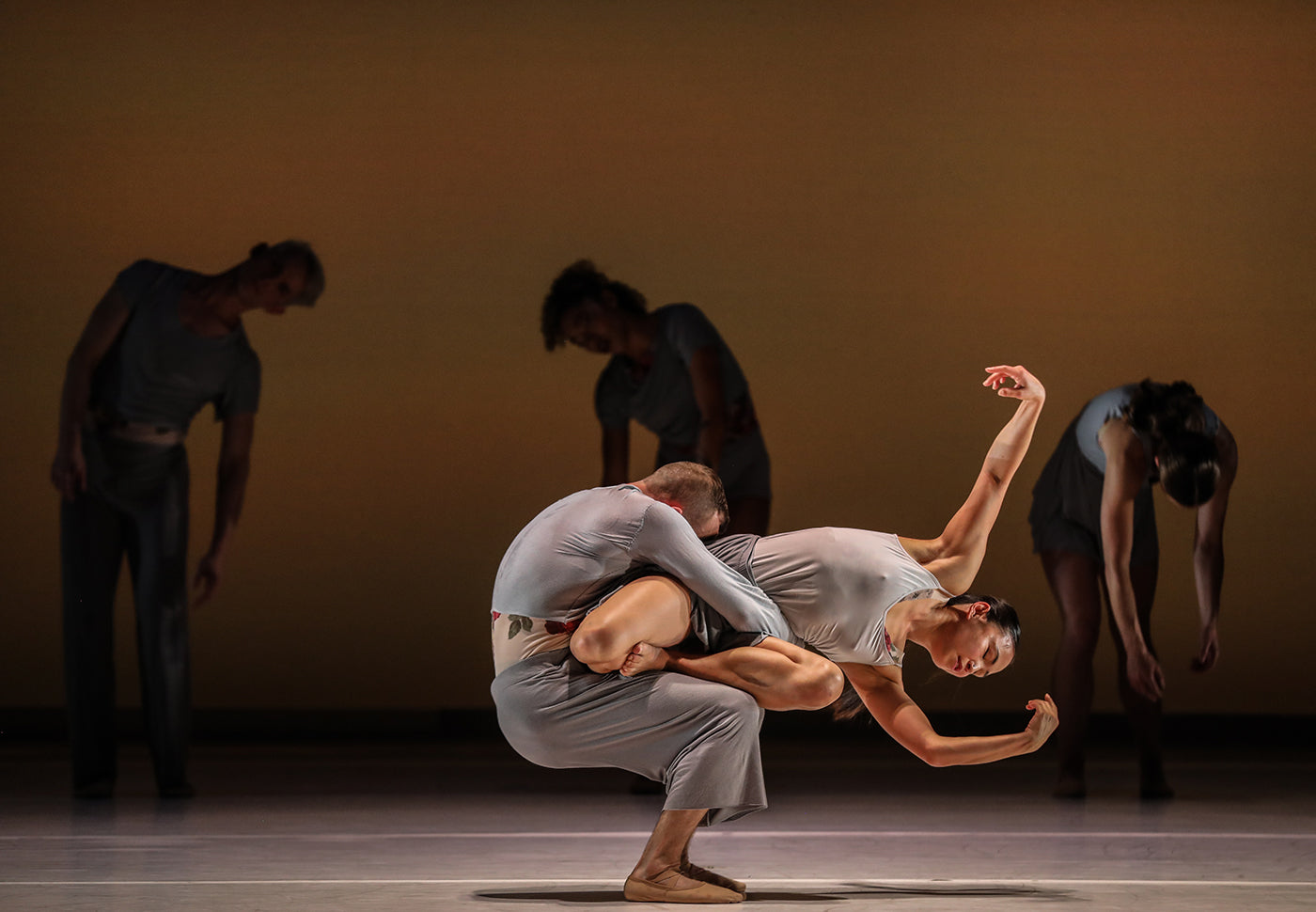Into this urban wasteland creep the ensemble, searching for something amid the heaps. They slide in from side doors, slippery and mistrustful. Ivgi and Greben's intense choreography creates a narrative-based urban fairytale, seething with the tacit violence of desperation and co-dependency. The dancers look like dystopian rag dolls, their movements are mired in restraint, the limitations of human bondage. Yet, they find a way to cope, to live amid the mess. Young people have no other means of living other than that which is in the here and now. Reduced at times to mere savagery, bodies spasm, fall and fight, yet there is tenderness too. Claw like hands and raised hackles give way to awkward couplings. Sophie Laplane and Constant Vigier can be picked out, sensually arching their backs, amid the rolling over and writhing forms on the ground.
A kind of compromise can be reached, with both groups unifying after a fashion, stockpiling the shoes into one homogenised pile. Yet the rules remain blurred. Hopscotch is played, or something approximating that, with the production line of bodies growing more efficient, in a neat row in thrall to the rhythmic intensity, the mechanical tick-tock of Tom Parkinson's specially composed electronic score. Urban posturing and hip-hop poses give way to flamenco shapes emerging from arms, and there is a tangle of legs and pointed elbows as the ensemble form a circle dead centre of the floor.
Occasionally, it can seem a little over-familiar, as we are reminded of Pina Bausch's famous dark earth-laden landscape for “The Rite Of Spring,” Hollywood legend Busby Berkeley's belles, or the monochrome photography of Sebastiao Salgado, who chronicled the struggles of miners seeking gold in Serra Pelada in Brazil.
Repeated gestures like rolling, eyes covered with hands, and running in circles emulate the interminable rigmarole of the working day—the constant slog, the sweaty exhaustive motions and hums of the daily grind. A desire to be other than human (more fast, more productive) while showing human traits like empathy provides a sense of paradox.
In spite of gestures towards darker leitmotifs, it's the solos which give this piece its real character and emotional impact.
As shafts of light (created by lighting designer Yaron Abulafia) penetrate through the gloom of the workspace, men carry symbols of aspiration into the space like beacons of hope—new shiny red shoes all picked out and lit by Abulafia like diamonds in a mine. Now, individuals can get their moments to shine, such as the poised Luke Schaufuss, a frantic Rimbaud Patron and, left alone to fend for herself with ritualistic gestures—hands fluttering, as though crossing herself, a crablike walk—the picture of innocence undone, Kayla-Maree Tarantolo, who could, like the shoes, be made out of rubber, such is her fluidity.
Ivgi and Greben seem to be implying that mechanisation is no substitute for human endeavour, but push humans to breaking point, and the whole system will snap, as with a chain. It's a humane statement of intent, and even if some of the momentum gets lost before the end scenes, Tarantolo's extraordinary solo brings some much-needed vim and vitality. The dignity of humanity will surely prevail. We are not lost to the machine—yet.









comments